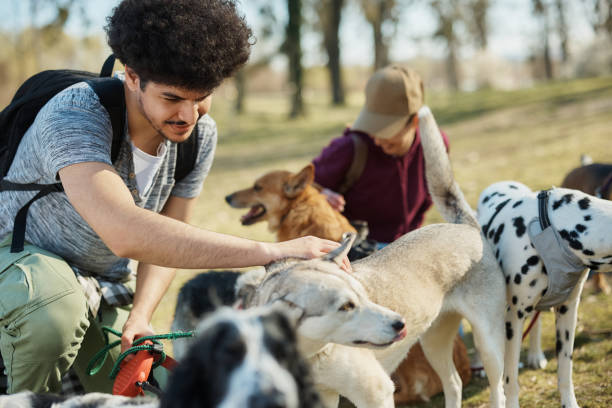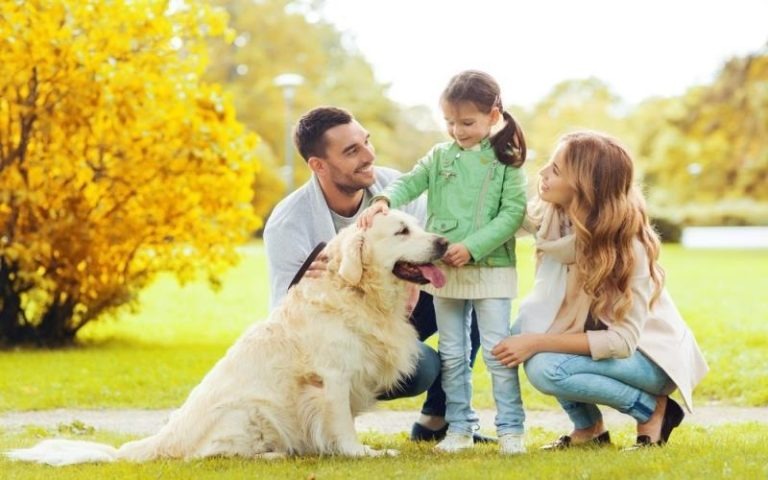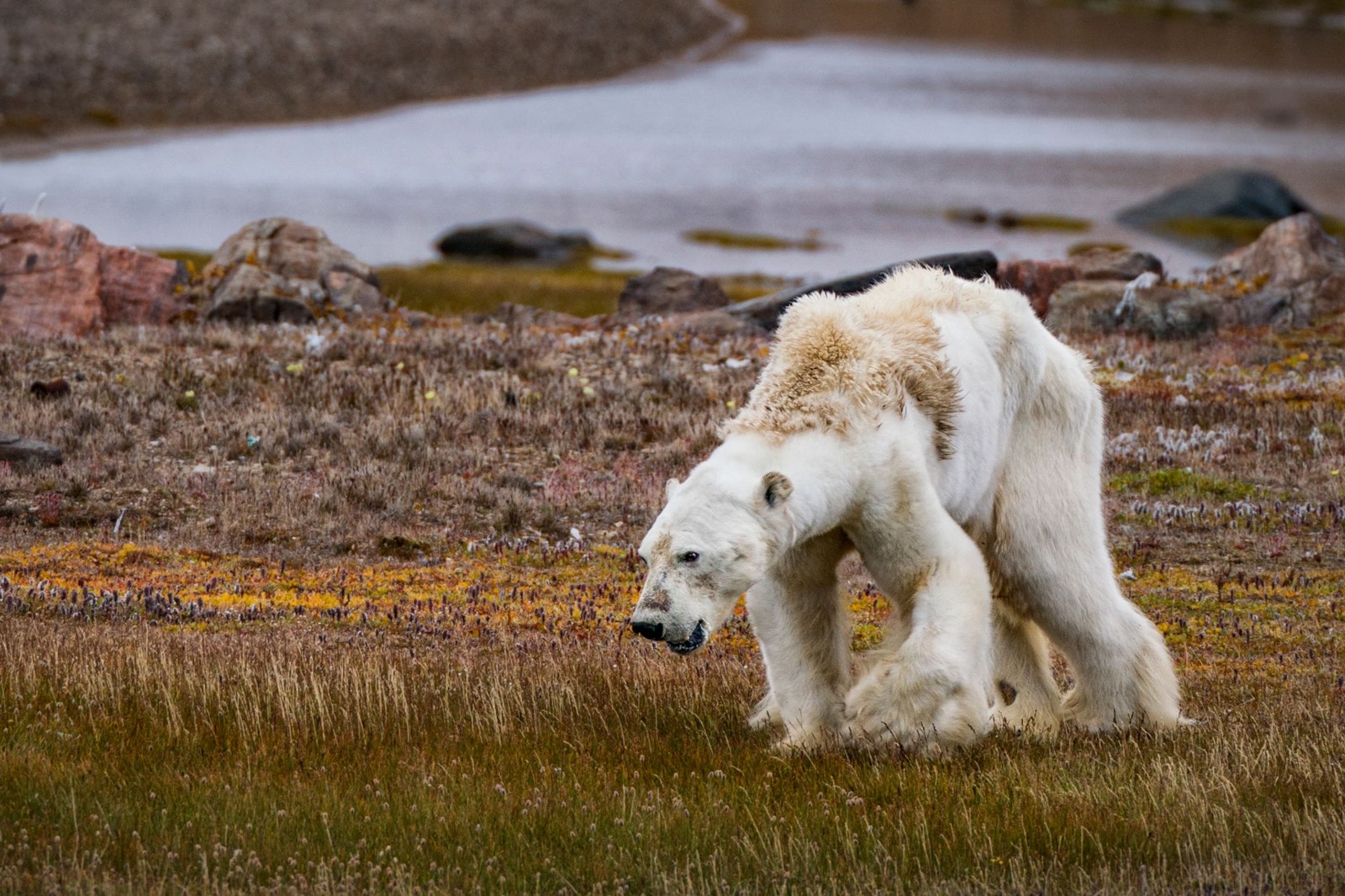
Training Pets for Group Settings: How to Prepare Your Pet for the Park, Vet Visits, and Travel Adventures
Ensure your pet’s success in group settings like parks, vet visits, and travel by learning effective training strategies. This guide covers essential steps to make every outing enjoyable for both of you.
🐶 Pet Star
50 min read · 12, Apr 2025

1. Introduction: Why Training for Group Settings is Essential
Training your pet for group settings such as parks, vet visits, and travel is not just about making life easier for you—it’s about ensuring your pet’s safety, comfort, and well-being. Whether you’re preparing for a walk in the park, a trip to the veterinarian, or an exciting travel adventure, understanding how to handle your pet in these situations is crucial. Many pets, especially those that are young, anxious, or not properly socialized, can become overwhelmed or stressed in group environments, which may lead to undesirable behaviors.
The key to having a smooth experience in group settings lies in early preparation and consistent training. Training helps reduce stress for both you and your pet, fosters good behavior, and builds confidence in your pet as they encounter new situations. In this article, we will walk you through effective methods and strategies to train your pet for three common group settings: the park, the vet, and travel.
2. Training Your Pet for the Park
The park is a wonderful place for your pet to socialize, exercise, and enjoy the outdoors. However, it can also be a source of anxiety and unruly behavior if your pet is not well-prepared. Dogs, in particular, can become distracted, overly excited, or nervous around other animals and people. To ensure that you and your pet have a positive experience, proper training is essential.
Socializing Your Pet at the Park
Why Socialization Matters:
Socialization is the process of exposing your pet to different environments, sounds, smells, and other animals. For dogs, this means introducing them to other dogs, people, and various outdoor settings in a calm and controlled manner. Pets that are well-socialized tend to be more confident and less likely to exhibit fear-based reactions.
Start Early:
If your pet is a puppy, it’s essential to begin socializing them early. The ideal window for socialization in puppies is between 3 to 14 weeks of age. This is the period when they are most open to new experiences. However, older pets can also benefit from socialization, even though it may take longer and require more patience.
Gradual Exposure:
Introduce your pet to the park slowly. Begin by visiting during quieter times of day, when there are fewer distractions and other dogs. Once your pet becomes accustomed to the sights and sounds of the park, increase the level of exposure. Take walks around the park before letting them interact with other dogs or people.
Training Basic Commands for the Park
Having your pet respond reliably to basic commands is crucial in a park setting. Key commands such as "sit," "stay," "come," and "leave it" can help you manage your pet’s behavior and keep them safe.
- Sit and Stay: These commands ensure that your pet stays in one spot and remains calm while you’re dealing with distractions. They’re especially useful in high-traffic park areas, where other dogs or people might approach.
- Recall (Come): A strong recall command is vital when you’re in a park, especially if your dog tends to get distracted by other dogs or wildlife. Practice recall in a quiet, low-stress environment before using it in the park.
- Leave It: This command is essential when you’re in a park and your pet is tempted by something dangerous, such as food scraps or wildlife.
Managing Overexcited Behavior
Some pets become overly excited in the park, which can lead to unruly behavior. To manage excitement:
- Provide Regular Breaks: Allow your pet to rest between play sessions.
- Playtime Etiquette: Encourage appropriate play by redirecting your pet if they start becoming too rough with other dogs.
- Positive Reinforcement: Reward calm behavior and discourage jumping or excessive barking.
3. Preparing Your Pet for Vet Visits
Vet visits can be stressful for both pets and their owners. The unfamiliar environment, strange smells, and the presence of other animals can cause anxiety. Preparing your pet for the vet involves desensitizing them to the clinic environment and helping them remain calm during examinations.
Desensitizing Your Pet to the Vet
Why Desensitization is Important:
Desensitization involves gradually exposing your pet to the sights, sounds, and smells of the vet’s office before they experience a full exam. The more familiar they are with the environment, the less likely they are to feel stressed or anxious during visits.
First Visit:
Before any medical exams, take your pet to the vet for a simple visit where they are not being examined. Allow them to explore the waiting area, hear the sounds of the office, and smell the different scents. Offer treats and praise for calm behavior.
Practice Handling:
If your pet is fearful of being handled, practice gentle touches and handling at home. Touch their paws, ears, mouth, and tail regularly. Reward them with treats after each session to help them associate handling with positive experiences.
Training for Calm Behavior at the Vet
Once your pet is familiar with the environment, it’s time to practice specific behaviors that will help them remain calm during their visit. Some key skills to focus on:
- Stay Calm in the Waiting Area: Teach your pet to remain seated or lying down calmly when you’re waiting for your appointment.
- Remain Still During Exams: Encourage your pet to stay still during routine check-ups, which can make the experience smoother and faster for both of you.
- Practice Being Crated: If your vet uses a kennel or crate for certain procedures, get your pet accustomed to being in a crate beforehand.
Reducing Vet Anxiety
If your pet has a history of anxiety during vet visits, there are several strategies you can use:
- Calming Products: Consider using pheromone sprays, calming collars, or anxiety-relieving supplements.
- Shorter Visits: If possible, take your pet to the vet for shorter visits, like weigh-ins or just to get treats, to help reduce their stress over time.
4. Training Your Pet for Travel
Traveling with your pet can be an exciting adventure, but it also comes with challenges. Whether you’re taking a road trip, flying, or using other modes of transportation, preparing your pet for travel is crucial for their comfort and your peace of mind.
Acclimating Your Pet to a Carrier or Crate
For many pets, especially cats and small dogs, travel often involves a carrier or crate. Acclimating your pet to their carrier can make travel less stressful. Start by introducing the carrier long before the travel date. Place treats, toys, or comfortable bedding inside, and let your pet explore it at their own pace. Gradually increase the time they spend inside the carrier, and reward calm behavior.
Car Travel Prep
For pets traveling by car, safety is paramount. Use a pet seatbelt or secure crate to prevent movement during the drive. Begin by taking short trips around your neighborhood to help your pet get used to being in the car. Gradually increase the duration of the trips to build tolerance.
Car Sickness:
If your pet suffers from motion sickness, avoid feeding them right before the trip. Make frequent stops for water and bathroom breaks, and try to keep the car cool and well-ventilated.
Flying with Your Pet
Flying with pets can be more complicated, but proper preparation can help. Make sure to check the airline’s pet policies and requirements, including crate size, vaccination records, and health certificates. Acclimate your pet to the carrier by allowing them to sleep and relax in it well before the travel date.
During the flight, make sure your pet has everything they need, such as food, water, and familiar toys to help keep them calm.
5. Preparing Your Pet for Public Spaces: Parks, Outdoor Events, and Crowded Places
Taking your pet to public spaces such as outdoor events, crowded parks, or busy streets can present unique challenges. These environments are full of distractions, other pets, people, and unfamiliar noises that may overwhelm an unprepared pet. However, with proper training, your pet can learn to navigate these situations with ease and confidence.
Socializing Your Pet in Public Settings
Why Socialization is Key:
Socialization is essential in helping pets understand how to behave in public. Pets that are not properly socialized may react with fear, anxiety, or aggression when confronted with new environments or unfamiliar people and animals. For pets that are exposed to different public spaces early on, the learning process becomes much easier.
Steps for Socializing Your Pet in Public:
- Start Small: Begin with less crowded and more relaxed public places before heading to parks or busy outdoor events. A quiet street, pet-friendly café, or a small outdoor gathering can provide a good introduction to the world outside your home.
- Use Positive Reinforcement: Whenever your pet behaves calmly in public, reward them with treats and praise. This helps create positive associations with new environments.
- Gradual Exposure to Crowds: Gradually increase the level of stimulation by visiting busier parks, markets, or events. Always start with controlled exposure, and make sure your pet doesn’t get overwhelmed.
- Monitor Body Language: Pay close attention to your pet’s body language during socialization. Signs of stress, such as tail tucking, excessive panting, or cowering, may indicate that you need to take a step back and give your pet more time to adjust.
Dealing with Fear and Anxiety in Public Places
Some pets naturally feel anxious or fearful when they are surrounded by large crowds, loud noises, or unfamiliar faces. If your pet exhibits signs of anxiety, such as trembling, barking excessively, or trying to escape, it’s important to address the behavior to avoid it becoming a long-term issue.
Training Techniques for Anxious Pets:
- Desensitization: Gradually expose your pet to increasingly crowded environments. Start with quieter spaces and slowly work your way up to busier, more crowded locations. This gradual exposure allows your pet to become more comfortable with different levels of stimulation.
- Counter-Conditioning: Pair the stressful situation with something positive, such as treats or praise, to help your pet form a new, positive association with the stimulus. For example, if your pet is nervous around other dogs in the park, reward them with treats when they remain calm in the presence of other dogs.
- Calming Products: Consider using calming aids, such as pheromone diffusers or calming collars, which can help reduce anxiety. For more severe cases, consult with your veterinarian for other potential solutions.
Introducing Your Pet to New People and Animals in Public
When you take your pet to public spaces, they are likely to encounter new people and animals. Teaching your pet how to interact appropriately with strangers is crucial to maintaining peace and safety.
Steps for Introducing Your Pet to New People:
- Maintain Control: Keep your pet on a leash or in a secure harness to maintain control during introductions. Allow your pet to approach new people at their own pace, and never force the interaction.
- Use Positive Reinforcement: When your pet interacts calmly with new people, reward them with praise or treats to encourage good behavior.
- Teach Boundaries: If your pet is particularly reactive or nervous, you may want to teach them the “leave it” or “stay” command to help them maintain their space when approached by others.
Introducing Your Pet to Other Animals:
- Keep it Calm: When introducing your pet to other animals, especially dogs, take it slow. Start with parallel walking, where the pets are on opposite sides of a fence or barrier, and gradually allow closer interaction.
- Watch for Signs of Stress: Monitor both pets for signs of stress, such as growling, stiffening, or excessive barking. If either animal exhibits stress, separate them and try again later in a calmer environment.
6. Travel Prep: Training Your Pet for Long-Distance and Multi-Destination Trips
Traveling with pets, especially for long-distance or multi-destination trips, requires meticulous planning and training to ensure their comfort and safety. Whether you're planning a road trip or an international flight, your pet’s behavior and preparedness will determine how smooth the trip will be for both of you.
Long-Distance Travel: Road Trips with Your Pet
Why Road Trip Training is Crucial:
For road trips, pets need to feel comfortable in the car for extended periods. This means teaching your pet to sit or lie down in a vehicle without getting overly excited, anxious, or car sick.
Steps for Road Trip Preparation:
- Short Car Rides First: Before embarking on a long trip, take your pet on several short car rides to accustom them to the vehicle. Gradually increase the length of these rides until your pet is comfortable with longer journeys.
- Comfort and Safety: Always ensure that your pet is safe during car rides. Use a pet seatbelt, carrier, or crate to secure your pet. This not only keeps them safe but also prevents distractions while driving.
- Bathroom and Hydration Breaks: Make frequent stops during long trips to let your pet stretch their legs, use the bathroom, and hydrate. These breaks are essential for your pet’s comfort.
- Familiar Items: Bring familiar items, such as your pet’s favorite blanket, bed, or toys, to provide comfort and reduce anxiety during the trip.
Flying with Your Pet: Preparing for Air Travel
Air travel can be one of the most stressful types of travel for pets. Whether your pet is flying in the cabin with you or in the cargo hold, proper preparation is crucial for reducing stress and ensuring their safety.
Air Travel Preparation:
- Acclimate to the Carrier: Begin preparing your pet for the flight well in advance by introducing them to the carrier. Make the carrier a comfortable and familiar space by adding bedding, toys, and treats.
- Health and Documentation: Ensure your pet is healthy and up-to-date on all vaccinations. Check with the airline for their specific requirements, including health certificates and crate dimensions.
- Flight Day Tips: On the day of the flight, keep your pet calm by offering a long walk before heading to the airport. Avoid feeding them right before the flight to reduce the risk of motion sickness.
Training for Calmness During Travel
Whether you’re traveling by car, plane, or train, it’s important to train your pet to remain calm during the journey. This means reinforcing positive behaviors, such as staying in one spot, not barking excessively, and not becoming overly excited when encountering new places.
- Practice Calmness: Before embarking on your trip, practice leaving your pet in their carrier or crate for extended periods of time. This teaches them that being in a confined space can be comfortable and doesn’t necessarily mean they’re going somewhere scary.
- Positive Reinforcement During Travel: During your journey, reinforce calm behavior with treats or praise. If your pet is nervous or excited, help them calm down with soothing words, gentle petting, and offering them a favorite chew toy.
Conclusion
Training your pet for group settings like parks, vet visits, and travel is essential for ensuring both their safety and comfort. Whether you’re walking your dog in a busy park, taking them to a potentially stressful vet visit, or traveling with them, proper preparation can make these experiences much more enjoyable for both you and your pet.
The key to success in these situations is consistent training, patience, and understanding your pet’s unique needs. Early socialization is essential, as it lays the foundation for your pet to handle the sights, sounds, and interactions that come with public spaces. Introducing your pet to various environments and people gradually, while rewarding calm behavior, helps them build confidence.
For vet visits, desensitizing your pet to the sounds and smells of the clinic, as well as getting them used to being handled, can reduce anxiety and make routine checkups easier. Similarly, for travel, whether it’s by car, plane, or another method, training your pet to feel secure in their carrier and maintaining calmness during the journey ensures a smoother, less stressful experience.
Every pet is different, and their readiness for social situations will depend on their temperament, prior experiences, and how consistently they are trained. While it may take time and persistence, the benefits of a well-adjusted pet in group settings are immense—from reduced anxiety to better social interactions. With patience and dedication, you can ensure that your pet enjoys these outings as much as you do.
Q&A: Training Pets for Group Settings
Q1: How long does it take to train a pet for group settings like parks and travel?
A: The timeline can vary depending on your pet’s age, temperament, and previous experiences. With consistent training, you may see progress in a few weeks, though it may take months for full comfort.
Q2: What should I do if my pet becomes anxious during a vet visit?
A: Gradual desensitization, positive reinforcement, and calm handling can help reduce anxiety. Consider consulting your vet for calming solutions if needed.
Q3: How can I help my pet enjoy trips to the park?
A: Start by socializing your pet gradually, introducing them to new experiences and people slowly. Use positive reinforcement to reward calm behavior, and ensure your pet is comfortable around other animals.
Q4: Can older pets still learn to handle travel or visits to the vet?
A: Yes, older pets can still learn, but it may take more time and patience. Gradual exposure and positive reinforcement are key.
Q5: How can I make sure my pet is safe during a long car trip?
A: Use a secure crate or pet seatbelt to keep your pet safe during the journey. Make frequent stops for bathroom breaks and hydration to keep them comfortable.
Q6: How can I prevent my dog from being aggressive toward other dogs at the park?
A: Socialize your dog early and ensure they are well-trained with basic commands. Start in quieter areas before progressing to busier spaces.
Q7: Should I take my pet to a crowded public event?
A: If your pet is not accustomed to crowds, it may be better to avoid it initially. Start with quieter environments and gradually work up to busier events.
Q8: What are some signs that my pet is stressed during travel?
A: Signs of stress include panting, drooling, whining, or attempts to escape the carrier. Take breaks and try calming methods to ease their anxiety.
Q9: How can I train my pet to stay calm during airport security checks?
A: Practice crate training well in advance. Acclimate your pet to being in their carrier for longer periods and reward calm behavior during practice runs.
Q10: Is it necessary to consult a professional trainer for socializing my pet?
A: While not always necessary, a professional trainer can provide valuable guidance, especially if your pet has severe anxiety or behavioral issues. They can tailor the training to your pet’s needs.
Similar Articles
Find more relatable content in similar Articles

How Pets Strengthen Family Bonds...
Pets are more than just compan.. Read More

How Climate Change Affects Wild and Domestic Animals...
Climate change is dramatically.. Read More

The Growing Trend of Therapy and Emotional Support Ani..
Exploring the remarkable rise .. Read More

Pets and Mental Health: The Science Behind Emotional H..
Discover the profound impact o.. Read More
Explore Other Categories
© 2024 Copyrights by rPets. All Rights Reserved.